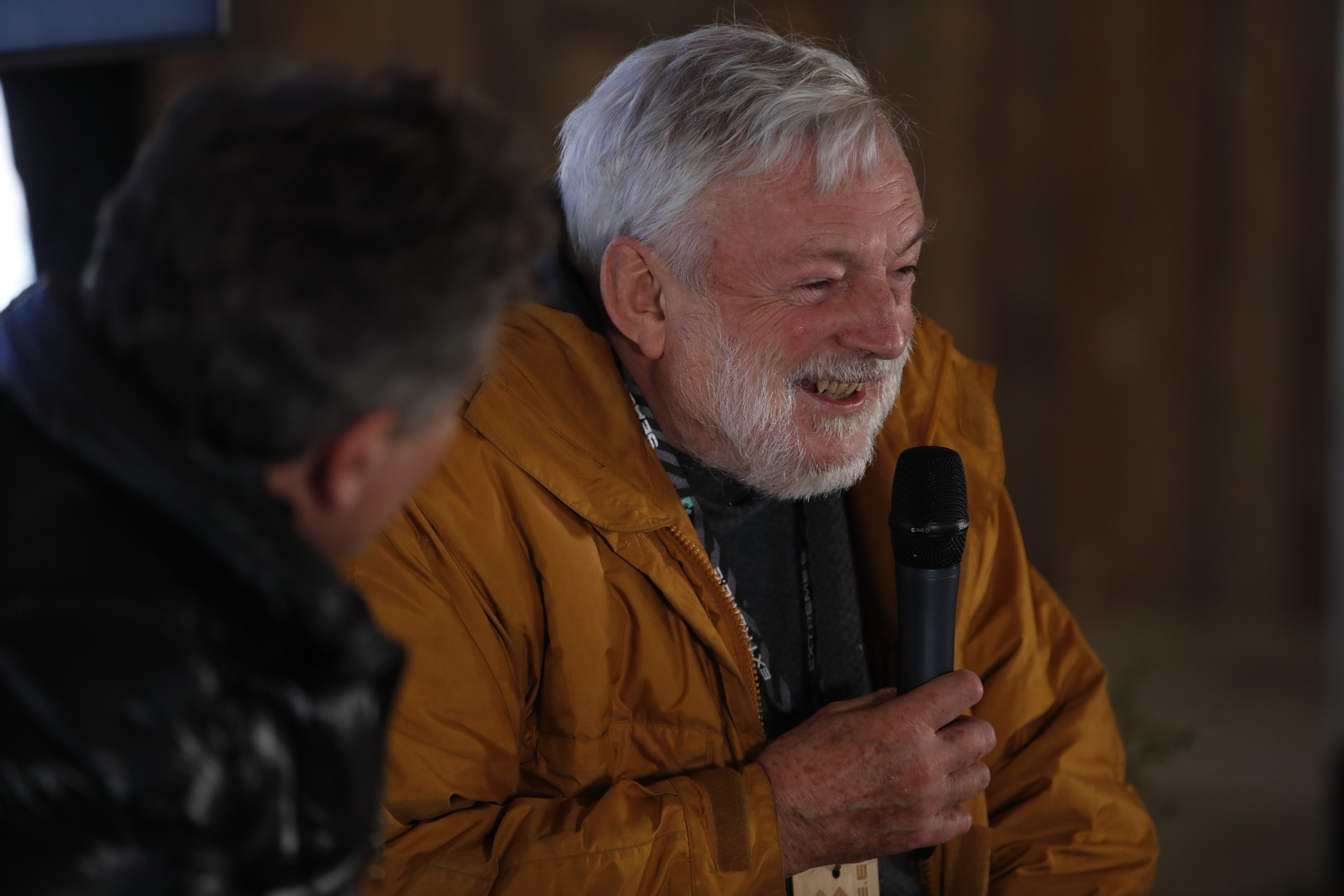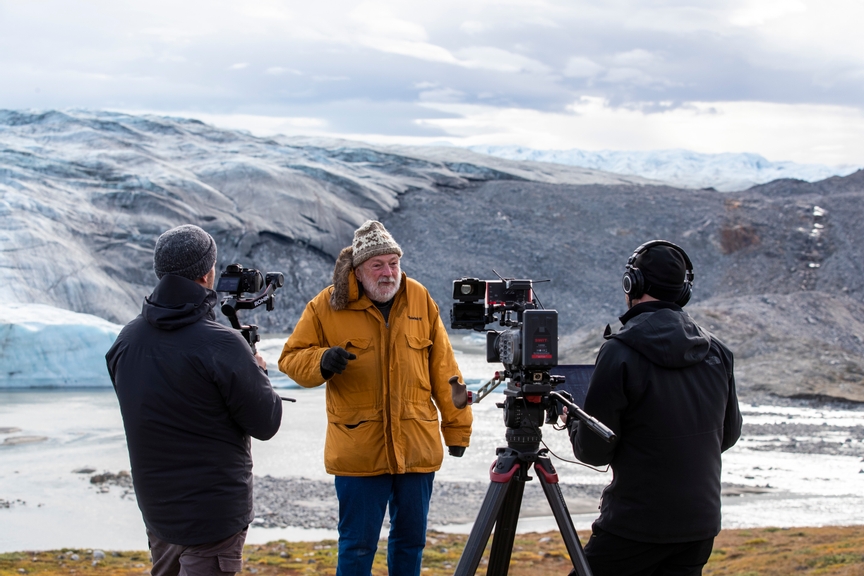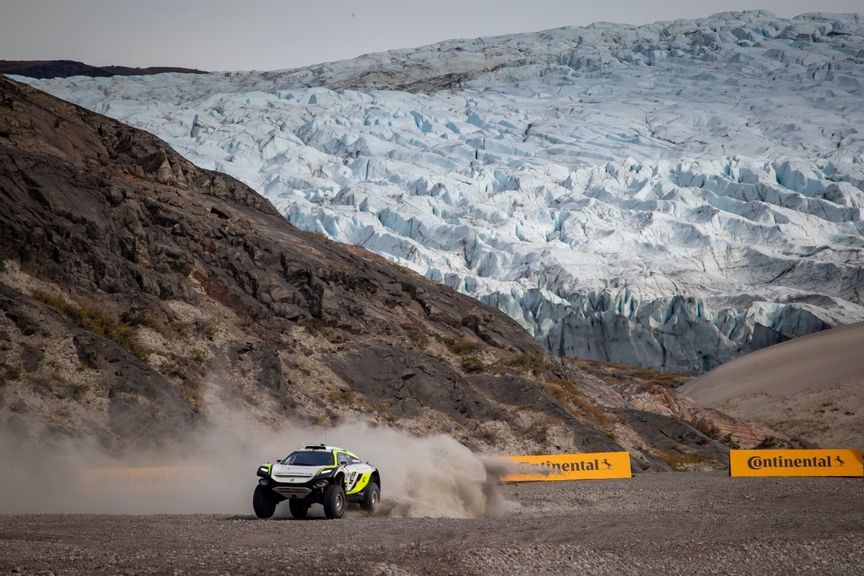
XE Explains: Greenland and the climate emergency
The championship, which raced in Greenland in 2021 for the Arctic X Prix, has continued to shed a light on the environmental health of the country in the years since, with melting ice sheets and glaciers the principal result of the growing global temperatures. In this latest ‘XE Explains’, Professor Wadhams, a renowned Arctic expert from the University of Cambridge, shares his insights on rising sea levels, current academic predictions and the long-term impacts of a major global flood.
Extreme E: Could you summarise the current state of play in Greenland as a result of climate change?
Professor Wadhams: It is absolutely extraordinary and something that has never happened before. We are now getting over 30 million tonnes of melt water occurring per hour. It is unprecedented. There are now huge melt pools and cascades coming from the ice sheets in Greenland, and it is hard to understand what that will now mean in terms of the characteristics of the ice going forwards. That is also the same for the volume of ice long term and the amount of it – things are changing at such a rate.
Extreme E: With the situation in Greenland constantly changing, what is the latest research on the ground in the country indicating?
Professor Wadhams: Some of the latest findings, from James Hansen, suggest that the continued rate of increase melt water and melting ice sheets could mean that sea levels rise by around five metres by 2100. Previous predictions stipulated that the rise would be between 0.5 and one metre, so these latest indications are a huge increase on that and a significant difference. It means that everywhere we considered settled could be at huge risk such is the potential sea level increase.

There is likely to be flooding on a large scale, which was not previously expected in earlier findings, but that is the potential trajectory we are heading towards. Some places, as a result, are not really ready prepared for the flood danger.
Extreme E: Do you think there is still a lot of complacency towards the climate crisis, especially with indications such as these in Greenland, which is a country so pivotal to the health of our planet?
Professor Wadhams: Yes – absolutely. There is still a lot of work to do to ensure these sorts of findings are filtering through. The huge cascades of water coming from the melting ice sheets is deeply alarming and will result in massive changes in sea level. We have to be ready for this. Those in coastal areas are going to be at huge risk, especially with the latest projections. Homes in those areas will just be swept away.
Extreme E: We are now in our fourth season and it has been three years since the Arctic X Prix. As an example, how much change in Greenland is likely to have taken place during that time?
Professor Wadhams: Conditions in Greenland have definitely worsened as a result of the melt water. There was fresh water and certain amounts of flow and flooding when we had first visited there, but it was not too overwhelming. That has changed quite a bit since then, in the area raced in, and flooding has also taken place there. Water has flowed out through newly created areas, too. It is now very different and I suspect there will be pretty dramatic changes from this year onwards.

Extreme E: If there was any advice you could give to people who are perhaps reading about the situation in Greenland for the first time, and how it impacts climate change, what would it be?
Professor Wadhams: It would be to look at the amount of water that is involved as a result of the changes in Greenland. The total mass of 30 million tonnes is extraordinary, especially when you compare it to the smaller amounts that you would get in normal circumstances. Major flooding across low-lying areas is a natural consequence of this and that is what is likely to occur as a result of the increased water.
Moreover, living in coastal areas will be a real risk as the years go by. We need to be aware of what we are letting ourselves in for. Estimates from Hansen are that this could happen within the next decade if we do not take any action. By the time we are a few decades on from that, widespread flooding is likely to occur and is a huge threat. We are living through it now and people across the world are experiencing it – one third of Pakistan was covered with water earlier this year. Starting to address that now is really important.
Extreme E: What would need to happen to combat these threats caused by the climate emergency?
Peter Wadhams: It is important to recognise the origin of flood water. Flood water comes from sea level rise and sea level rise, as we know from Greenland, is a consequence of trapped water being released by melt. This is happening world wide wherever glaciers still exist, such as the Himalayas, and the only way to deal with it is to deal with the global warming which causes it. Global warming is the cause and sea level rise just an inescapable consequence.
Extreme E: How important is it for the championship to keep revisiting Greenland and focus on the ongoing climate issues in the country to help raise awareness?
Professor Wadhams: It is crucial. If we can see what is happening each year we can offer guidance and that is vital. The amount of change occurring is unprecedented and we can determine whether the trend is accelerating or slowing down. Greenland is sensitive to the dangers of the climate crisis, much like Sardinia in terms of wildfires, and therefore it is so important we continue to revisit to understand these issues. A rapid, accelerated melt is a real danger.
Ultimately, we must all take greater responsibliity to lower emissions to try and keep global temperature rise below 1.5 degrees. We all have a part to play in this battle and make a sizeable contribution to reduce its impact as a result.
Find out more about the championship's efforts in Greenland in the latest episode of Electric Odyssey below, where Extreme E returned with JBXE drivers Andreas Bakkerud and Hedda Hosås for the series' latest Legacy Voyage.